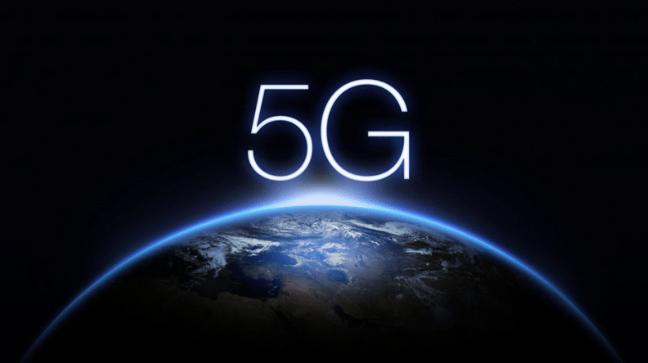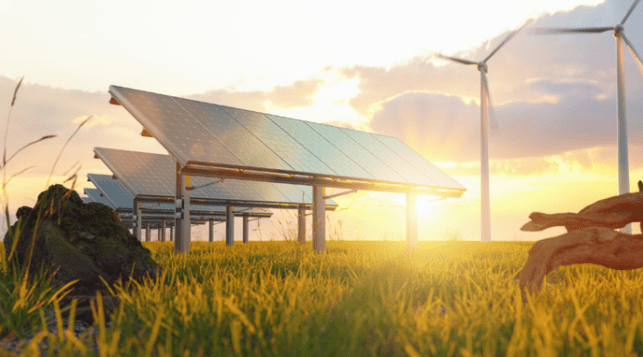We’ve all heard the hype—5G is here, and it’s going to change everything. Faster speeds, zero lag, smart cities, self-driving cars… the list goes on. But here’s what most people don’t realize: 5G is just the beginning. What comes next is even more explosive.
The future of connectivity is racing forward, and we’re not just talking about faster downloads. We’re talking about a world where everything is connected, from your fridge to your heartbeat to entire autonomous cities. A world where latency disappears, real-time communication is the norm, and the physical and digital realms fuse into one seamless reality.
Sounds like science fiction? It’s not. This is the future of 5G and beyond—and it’s unfolding faster than anyone expected.
In this article, we’ll break down what 5G really is, why it matters, what’s coming next (yes, 6G is already on the table), and how it’s going to reshape your world in ways you haven’t even imagined.
What Is 5G, Really?
Let’s get something straight—5G isn’t just a faster version of 4G. It’s a massive leap forward in how data moves, behaves, and connects us.
While 4G gave us fast mobile internet, streaming, and social media on the go, 5G takes things to a whole new level with three key improvements:
- Speed: Up to 100 times faster than 4G, allowing for lightning-fast downloads and ultra-HD streaming without buffering.
- Low Latency: Response times as low as 1 millisecond. That’s fast enough for real-time applications like remote surgeries or autonomous vehicles.
- Massive Device Connectivity: 5G can handle up to a million devices per square kilometer, powering the Internet of Things (IoT) at a scale never seen before.
This means more devices, faster responses, and a network that behaves almost like magic.
The Real-World Impact of 5G: It’s Not Just About Phones
Let’s move past the buzzwords. Here’s what 5G is really enabling today:
- Smart Cities: Traffic lights that adjust in real time, sensors that detect water leaks instantly, and connected infrastructure that improves safety and efficiency.
- Self-Driving Cars: Vehicles that talk to each other and the road, reacting to danger before humans even notice it.
- Remote Surgeries: Surgeons performing delicate operations across continents without delay.
- Industrial Automation: Factories running on real-time data, improving productivity and reducing waste.
And yes, it also means you’ll never buffer during Netflix again, no matter where you are.
5G in Action: Industries Being Revolutionized
Healthcare
5G is making telemedicine mainstream, enabling doctors to diagnose and treat patients remotely with high-resolution video and real-time vitals. Emergency response is getting a major boost too—first responders can stream data and receive live updates en route.
Transportation
From autonomous trucks to drones, 5G is turning transportation into a data-driven ecosystem. Real-time communication between vehicles, traffic systems, and weather updates ensures safer, faster travel.
Entertainment
Augmented reality (AR) and virtual reality (VR) are about to go mainstream. With 5G, you can explore virtual worlds, play ultra-realistic games, and attend concerts and events from anywhere—in real time.
Manufacturing
Smart factories are leveraging 5G to monitor every inch of production lines. Machinery is now interconnected, reacting instantly to changes, defects, or delays. This means higher efficiency, fewer errors, and massive cost savings.
What’s Holding 5G Back?
Despite all the excitement, 5G adoption hasn’t been smooth sailing. There are still challenges:
- Infrastructure Gaps: Building out 5G networks requires a massive amount of small cell towers, fiber optic cables, and base stations.
- High Costs: Upgrading equipment and devices isn’t cheap—for carriers, governments, or consumers.
- Device Compatibility: Many older phones and IoT devices aren’t 5G-ready.
- Geographic Disparity: Rural areas are still struggling with basic 4G, let alone 5G rollout.
But here’s the twist—these obstacles are temporary. The race is on, and the finish line is in sight.
Beyond 5G: What Is 6G and Why Should You Care?
Yes, 6G is already in development. And if you thought 5G was powerful, prepare to have your mind blown.
Expected to arrive around 2030, 6G promises:
- Speeds up to 1 Terabit per second
- Latency measured in microseconds
- Full integration of AI into the network
- Brain-computer interfaces
- Holographic communications
In other words, 6G won’t just connect devices—it will connect everything, including your mind to the internet. Imagine controlling technology just by thinking. That’s not fantasy. That’s the direction we’re heading.
Key Technologies Powering the Future of Connectivity
Let’s break down the cutting-edge tech driving us beyond 5G:
Millimeter Wave (mmWave)
This spectrum offers ultra-high speed and capacity. Perfect for dense urban areas—but limited in range and sensitive to obstacles like trees and buildings.
Beamforming
Beamforming focuses signal strength directly toward your device instead of broadcasting everywhere. This leads to faster, more reliable connections.
Network Slicing
One network, many virtual networks. 5G allows network slicing, meaning a hospital could have a secure, ultra-fast private connection that doesn’t interfere with regular users.
Edge Computing
By processing data closer to where it’s generated (instead of sending it to a faraway data center), edge computing ensures faster response times and reduced bandwidth use.
The Internet of Everything: Where 5G and IoT Collide
5G and the Internet of Things are a match made in tech heaven. Here’s what their combined power will enable:
- Smart homes that optimize your energy, lighting, and security.
- Wearables that monitor health in real time and alert doctors before problems escalate.
- Connected agriculture with sensors that adjust watering, detect disease, and increase crop yield.
- Smart supply chains with real-time inventory tracking and automated restocking.
In this world, everything becomes intelligent, responsive, and connected.
The Risks and Challenges Ahead
As with any revolutionary technology, there are concerns:
- Privacy and Surveillance: More connectivity means more data. Who controls it? How is it protected?
- Cybersecurity: A hyper-connected world is also more vulnerable to large-scale cyberattacks.
- Health Concerns: Some still worry about radiation exposure, despite scientific evidence debunking the myths.
- Digital Divide: Will this future be accessible to everyone—or just the wealthy and urban?
These challenges can’t be ignored. But with the right regulations, investments, and innovation, they’re problems that can be solved.
What It Means for You: A Day in a 5G-Connected Life
Picture this:
You wake up. Your smart bed has already analyzed your sleep and optimized your wake-up time. Your mirror displays your schedule, weather, and health vitals. Your car drives itself to work, while you finish up a VR meeting with clients in Japan. At lunch, a drone delivers your meal. After work, your wearable suggests a personalized workout and automatically books a training slot at your favorite gym.
Everything happens in real time. Everything is connected. Everything just works.
That’s not 2050. That’s the world you’ll live in within a decade.
Conclusion: The Future of Connectivity Is Already Here—And It’s Just Getting Started
5G isn’t the finish line. It’s the launchpad for a new era of digital life. A world where connectivity is constant, intelligent, and invisible. Where our devices, cities, and even our bodies are linked in real-time harmony.
As we move toward 6G and beyond, the possibilities are limitless—but so are the responsibilities. We’re entering a time when data is currency, speed is power, and connectivity is the lifeblood of civilization.
The question isn’t whether you’ll be part of it. The question is—are you ready to keep up?
Because the future of connectivity isn’t waiting for anyone.
FAQs
Q1: What makes 5G different from 4G?
5G is significantly faster, has lower latency, and supports more connected devices than 4G. This enables advanced technologies like autonomous vehicles, smart cities, and real-time remote surgeries.
Q2: When will 5G be available everywhere?
Major urban areas already have 5G, but global, full-scale rollout—including rural regions—may take several more years due to infrastructure and cost challenges.
Q3: What is 6G, and when will it arrive?
6G is the next generation of wireless technology, expected around 2030. It will offer even faster speeds, ultra-low latency, and advanced features like holographic communication and brain-computer integration.
Q4: Will 5G affect health?
Current scientific studies show no proven health risks from 5G radiation. Regulatory bodies have declared it safe based on decades of research into radiofrequency exposure.
Q5: What industries will benefit most from 5G?
Industries like healthcare, transportation, manufacturing, entertainment, and agriculture are already seeing major transformations due to 5G’s capabilities.
Q6: How does 5G impact the environment?
5G can reduce energy waste through smart grids, efficient logistics, and real-time monitoring. However, concerns remain about e-waste from rapid device turnover.



